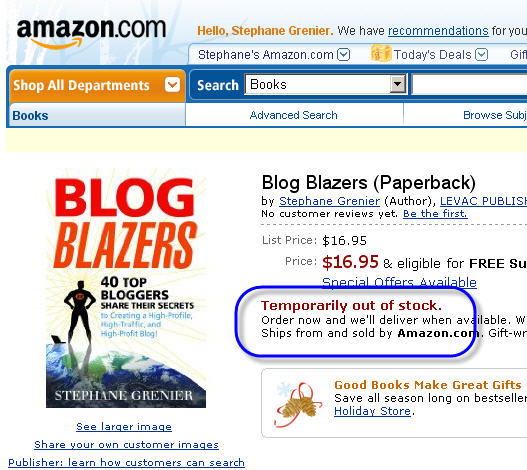Nothing is Impossible
Sometimes not knowing you can’t is the best thing for you.
How many times have we been told we can’t do this or that? How many times have stopped only because we’ve been told it’s not possible? How many opportunities have we missed because we didn’t think we could do it? We’ll today I’m going to share with you the story of Cliff Young and the power of ignoring the “it’s not possible” advice.
In 1983 Cliff Young showed up to run a 543.7-mile (875-kilometer) endurance race from Sydney to Melbourne in Australia that takes place over 5 days. Being such a grueling race, you’ll generally only find world class athletes competing in it. But not in 1983. Cliff, then 61 years old, initially showed up for the race in overalls and boots to compete.
As you can imagine Cliff gathered a lot of attention before the race started. Most of it pretty negative. They told him, “You’re crazy, there’s no way you can finish this race.” To which he replied, “Yes I can.” and continued to give an explanation of why when he was younger he would run for 2-3 days at a time and round up as many as 2000 sheep over 2000 acres.
Still no one believed him. He did get attention because, well, you have to admit, it sounds like lunacy. How could this 61 year old man initially dressed in overalls and boots run a 5 day grueling race against world class athletes?
And then the race began. As you’d expect, the athletes quickly left Cliff in the dust. Not only that, but he didn’t exactly have the best running form. There was even some fear going around that he would hurt himself. But on the race went.
Now, before we go on, the common strategy for running this race by the world class athletes is to run 18 hours a day and sleep 6 hours at night. This way they can stay alert and keep running.
Not so for our friend Cliff. When he said he use to round up sheep for 2-3 days, he meant 2-3 days straight. Straight through the day and night that is. So instead of sleeping like the world class athletes, Cliff did the impossible. He ran through the night. He never really stopped (except to eat and some other basic necessities). He just kept going. He believed it was possible even though everyone else told him it was impossible.
Of course Cliff didn’t run as fast as the world class athletes, but he ran 24 hours a day for 5 days. If you do the math, running an extra 6 hours a day over 5 days adds up to a lot of time. It adds up to an additional 30 hours of running. And this gave Cliff a big advantage.
Not only did he finish the race, he won it!! And not by a slim margin. He broke the course record by 9 hours! Yes a full 9 hours. He crushed his competition.
So if someone tells you it’s not possible, just think of our friend Cliff before you resign yourself and give up. Think: What would Cliff do?
Permalink to this article Discussions (14)
The Rabbit Doesn't Always Win

Blogging is a marathon and not a sprint. Starting a business is a marathon and not a sprint. Achieving success is a marathon and not a sprint.
Sure you have to work very hard at the beginning, but you can’t stop after a short sprint. You have to keep going. You have to persevere. I’ve said it numerous times here, it’s not the quality of your idea that matters, it’s the execution over time that matters.
Now don’t get me wrong, you definitely should take advantage of the excitement and motivation that comes from starting a new project such as a blog. That’s a very good thing. But whatever you do, don’t lose your momentum completely. It’s ok to fall behind here and there, we all do it, but don’t stop. Whatever you do just keep on going.
The majority of time the difference between success and failure is that the person who succeeded persevered. It’s not quite as simple as that, but have no doubt that it plays a major role in success. It’s easy to get stopped by the first road block. Most people do. Maybe it’s that you don’t understand something. Maybe you’re tired. You’ve had a long week. You have a social event you’d like to attend. Maybe it’s that you’re not sure what to do next. Whatever it is, keep moving. Don’t stop whatever you do.
A classic example of a blog with really good potential is Hiring Horror. A lot of people like to hear about hiring horror stories. It’s entertaining and we’ve all seen too many of them ourselves. Which of course makes for a potentially very interesting blog. And indeed one was created, Hiring Horror.
Looking at the posts (please note I have no idea who’s behind this blog), they definitely jumped out from the starting gate. On the first day alone there were 4 posts! Then the next day there were 2 posts. Then the weekend came with no posts, which is not that unusual for a lot of blogs. Monday another 2 posts. A couple more days later, another 2 posts.
And then the momentum really started to fall apart. 5 days later there’s only 1 more post. It took another 4 days for the next post. Then a lengthy 11 days for the next post. Then 16 more days for the next. Now we’re at 21 days since the last post and still counting…
This is a classic example of starting off with a full sprint and quickly fading. Although I can’t know for sure, I suspect the authors (there appears to be more than one) were all excited and expected to write several posts a day. And at first they were really motivated and couldn’t wait to write. The excitement of something new was abound.
Then the weekend came which slowed things. After the following week, well, the excitement had probably worn off and it became something they had to do. The zest was gone. And so the posting ratio fell fast. And within a few weeks all interest waned and the blog pretty much died. Maybe we’ll see another post, but I wouldn’t count on it. And it’s too bad because it had the making of a good blog.
Unfortunately that’s the same way most blogs (businesses, projects, etc.) start and fade within a few months. Everyone gets excited. They get a burst of energy. And then once the novelty fades things start to crumble until the whole thing ceases to exist.
The good news is it doesn’t have to be this way. You can succeed! You can make it! You just have to be aware of this before you start whatever it is you want to start. Make sure it’s worth it and push through it. As the movie Run Fatboy Run asks, what will you do when you hit the “wall”? Will you push through it or give up and go home?
Permalink to this article Discussions (0)
Blog Blazers Free Shipping Until Xmas!

Because of everything that’s happening with Amazon, I’m going to go on a lurk and offer free shipping for the book Blog Blazers until Xmas when you buy it directly from the official website (for Canadian and US orders). For international orders, until Xmas as well, shipping will be reduced to $5. In other words, I’ll cover your shipping costs.
I’m doing this because I’m very annoyed with this Amazon “Temporarily out of Stock” issue. I just don’t want to put anything in the way of you getting and benefiting from your Blog Blazers book before Xmas. The best part is that you don’t have to wait on Amazon to get free shipping. And you don’t have to buy $25 worth of books to get that free shipping!
So if you haven’t already bought Blog Blazers, now’s the time. This is special free shipping offer and it’s only going to last until Xmas!
Permalink to this article Discussions (2)
Blog Blazers Amazon Status
Firstly let me just apologize for the on and off “In Stock” and “Temporarily Out of Stock” messages appearing on the Blog Blazers listing on Amazon. What’s happening is that we’re trying to work with Amazon’s JIT (Just in Time) inventory system and experiencing some difficulties as illustrated in the screenshot below:
Basically the way it works for first time and self-published authors is that Amazon doesn’t want to order too many books ahead of time and be stuck with a larger than necessary inventory on hand. Nor can we blame them. From what I understand, most self published books end up selling less than 200 copies, and 60% of these sales are to friends and family. That’s pretty dismal. Of course that’s not always the case, there’s lots of examples of very successful self-published authors. The biggest I know of is Robert Kiyosaki who started his book series of Rich Dad Poor Dad as self-published. Another great example is Peter Bowerman with his book like The Well-Fed Self-Publisher.
In any case, Amazon is looking out for itself, and that’s perfectly understandable. Selling books is a business, and they do it well. So what happened with our book is that Amazon initially ordered a small number of books. Now before I continue, something to be aware of is that Amazon will only accept books they ordered if they come with a purchase order (barcoded). You cannot just ship books to Amazon to add to their inventory when you want to, you have to wait for them to order books. Makes sense.
Anyways, a lesser known trick is that they will often accept more books than requested as long as they’re part of the same purchase order and as long as the surplus is reasonable (don’t try to ship 1000 books when they ask for 20). However knowing that Blog Blazers is going to is selling well, we decided to ship some extra books with each PO (Purchase Order). On average so far, we’re shipping 2-3 times as many as they request per purchase order (sometimes more).
Getting back to our story, within a day of being released, the Blog Blazers inventory on Amazon was sold out. And it’s no wonder, the initial order was too small. Which means the status of Blog Blazers on Amazon fell to “Temporarily Out of Stock”. The next day, another PO came out, we did the same. And on it’s been continuing since…
So if you see the book Blog Blazers on Amazon with a status of “Temporarily Out of Stock” don’t worry, this is because Amazon is still trying to figure out how many books they need to have on hand to meet the number of books sold (JIT – Just in Time). And it definitely isn’t helping that the sales of Blog Blazers are increasing on a daily basis as more and more bloggers are posting about it every day!
I guess of all the problems I could have, this is the best one to have. But still…
Permalink to this article Discussions (11)
Blog Blazers is NOW AVAILABLE!!!
A little over a year ago I initially wrote about my intentions to write a book in which I was going to interview some of the most successful bloggers online. At the time, I had already lined up 18 bloggers and the project was off to an exciting start. Since then, the number of bloggers interviewed in the book has exploded to 40. And quite a list of bloggers it is!
Today I’m proud to announce the book is ready and available for purchase!!!
At this time, you can buy it directly from our website: BlogBlazers.com, Amazon, and so on. However, please note that the ebook version is only available from the official Blog Blazers website. In addition, if you purchase from the Blog Blazer website, you will have the option to select the “bundle package” which includes both the book and the ebook (the advantage being that you can click on the links in the ebook versus having to type them in).
Below is the list of people interview in Blog Blazers (alphabetically sorted by firstname). You can also read the full bios of the bloggers on the book’s website.
- Aaron Wall from SEO Book
- Ades Tynyshev from Ades Blog
- Al Carlton from Coolest-Gadgets.com
- Alex Papadimoulis of Worse Than Failure
- Andy Brice of Success Software
- Anita Campbell from Small Business Trends
- Asha Dornfest from Parent Hacks
- Ben Casnocha
- Ben Yoskovitz of Instigator Blog
- Bob Walsh author from 47 Hats
- Dan Lyons from The Secret Diary of Steve Jobs
- Dane Carlson from Dane Carlson’s Business Opportunities Weblog
- David Armano from Logic+Emotion
- David Seah
- Derek Semmler
- Dharmesh Shah from On Startups
- Eric Sink
- Ian Landsman of Userscape
- James and Alex Turnbull from Google Sightseeing
- JD from Get Rich Slowly
- Jeff Atwood of Coding Horror
- Jeff Clavier from Jeff Clavier’s Software Only
- Jennette Fulda from Half of Me
- Jenny from 101 Reasons I Hate Being Fat!
- Jessamyn West of Librarian.net
- Joel Cheesman from Cheezhead
- Jonathan Snook
- Manolo from Manolo’s Shoe Blog
- Neil Patel from Quick Sprout
- Pamela Slim from Escape from Cubicle Nation
- Patrick McKenzie from Micro ISV on a Shoestring
- Penelope Trunk of Brazen Careerist
- Ramit Sethi from I will Teach You to be Rich
- Rob Walling from Software By Rob
- Rohit Bhargava from Influential Marketing Blog
- Seth Godin
- Stephane Grenier of Follow Steph (me)
- Steve Rubel from Micro Persuasion
- Trent Hamm from The Simple Dollar
- Yaro Starak from Entrepreneur’s Journey
It’s very exciting to finally have the books in print! It’s been a long journey, but well worth it once you hold your first print in hand.
Please don’t hesitate to drop me a note to let me know what you thought about the book. And if you have a blog and you plan on reviewing it, please let me know. I’d love to read your reviews.
And remember Xmas is just around the corner. So if you haven’t already bought yourself a copy, it would make a great suggestion for someone else who doesn’t know what to get you!
Permalink to this article Discussions (13)
How to Generate Traffic to Your Website – David Scott Kane Review
Earlier this week David Scott Kane from The Recursive ISV wrote a very in depth and detailed review of my ebook How to Generate Traffic to Your Website. And quite a review it was. Thank you Scott for the very kind and positive words!
Some of the highlights include:
I’m going to state at the outset of this review that this book has the good stuff!
You gotta love a review that pretty much starts with that previous sentence! And if that wasn’t enough of an endorsement, the next quote from the review sure is:
I just believe that credit should go where credit is deserved and I believe this book is a must have for every micro ISV and indeed many who consider themselves ISV’s.
Like I said earlier, it is a glowing review. If nothing else, the fact that he values one chapter as enough reason alone to buy the ebook, well…
To my mind Steph’s chapter on this is worth every cent of the eBook alone. This is something I’m always harping on about here and something most ISV’s and micro ISV’s fail epically at.
What’s more, the conclusion is extremely positive:
The book covers a heck of a lot more too. I’ve been working with websites since 1995, yet I still found gems in this book.
I also found things I knew but had forgotten and some things I wasn’t in agreement with – but was able to take away and give more thought to.
Don’t assume you know the SEO game and are able to skip this, even if it only makes you take a fresh look at what you’re doing it’s certainly worth every cent of the $14.95.
Frankly I can’t wait to read his next book, coming out in November, on blogging.
I’ve really only scraped the surface on what’s inside Steph’s book. So in conclusion, yes I recommend it, highly. Read it, use it and improve yourself and your business of software.
As you can see, Scott gave my ebook How to Generate Traffic to Your Website a very glowing review. Thank you.
And in case you missed the link earlier, you can read his full review here.
Permalink to this article Discussions (0)
How Important are Headlines?

This post is an exert from my ebook How to Generate Traffic for Your Website:
How important are headlines? VERY. The reality is that a headline can often make or break an article. A headline will determine if even the first sentence of the article is even read. On average you have 5-7 seconds to get someone’s attention, which is done through the headline. More importantly, only 2 out of 10 people will read past your headline and actually read your article! That’s just how important headlines are.
To give you a more concrete example of just how powerful a headline can be, John Wesley submitted an article to several social networking sites, including Digg, Reddit, StumbleUpon, etc. The headline read “The Two Types of Cognition”. With this headline the article generated about 100 visitors. Nothing spectacular. However a couple days later, and after some work rewriting his headline, John resubmitted it with a new headline. With the new headline it got about 5000 visitors. A very significant difference, 50 times more visitors. What was the difference? Only the headline. The article was exactly the same. The headline went from “The Two Types of Cognition” to “Learn to Understand Your Own Intelligence”. You can find the details of his case study here.
Headlines can and do have a significant impact. It might only be one line, but it can easily make or break your articles success.
Permalink to this article Discussions (3)
How Blogging Can Help Your Business

This post is an exert from my ebook How to Generate Traffic for Your Website:
To give you a quick idea of the scale of blogging, here are some more quick metrics according to Technorati.com (April 2007):
- There are 70 million blogs
- There are about 120,000 new blogs each day, or 1.4 new blogs every second
- There are 1.5 million blog posts per day or 17 posts per second
What do these metrics mean for you and your company? Why is it important to blog? What’s are the benefit for your company? Will it help increase your traffic or revenues? Is it worth your time and effort (make no mistake about it, blogging successfully takes a lot of time and effort)?
For most companies, blogging can really help. It can help your business in a number of ways:
Personalize your business.
Instead of being just another faceless company website, it can give your website a second personality. It can give it that personal touch that people like. A lot of sales are through emotions, and people like to connect with people they like and trust. If you’re honest and real on your blog, and not just writing what you think people want to hear, you’ll create a personal bond with your customers. This will create long term traffic and revenues.
Express your personal philosophies and beliefs
A blog can allow you to express your personal philosophies, beliefs, etc. that might not be as appropriate on a corporate (or more official) website. For example, I share on my blog my beliefs about technical support. I’ve shared my beliefs that the most important aspects of software are easy to use, customer service, and quality. That it’s not the sheer number of features implemented, but rather how each feature is presented. To me that’s more important. I’d rather have less features, but have each one bug free and extremely easy to use. That’s my philosophy towards software design, and I’ll share it openly on my blog whereas I wouldn’t on my company’s website.
Behind the scenes.
I’ll also share what’s going on behind the scenes. How we’re doing on the next upcoming major release. Some struggles we had to deal with. Successes and failures we’ve experienced. A lot of people appreciate this. Why do you think movies often include commentaries and behind the scene clips? People like to know what happened behind the scenes. It helps bring a story to the businesses they deal with. And more importantly, it really helps them appreciate what you’re about. As a great example, my company LandlordMax doesn’t offer phone support. We tried it for a few months and realized it wasn’t going to work for us financially (if you don’t try you can’t know for sure), at least not unless we charged a significant amount. Now every time someone asks us why we don’t offer phone support I send them a link on my blog explaining why we don’t offer phone support. 99.9% of responses after reading this blog post are understanding and positive. Some extremely positive!
Transparency.
Another point very similar to behind the scenes, it’s giving your visitors transparency to your company. For us, because our customers plan to stay with us for the long haul, they want to make sure we’ll be around for a long time. Once they enter in all their data into the software, they don’t want the company to suddenly disappear. Our lifespan is important to them. By being transparent we can give them the confidence they might not otherwise get from just our corporate website.
Expertise.
People want to deal with competent people. When you go see a car mechanic you want to make sure they knows what they’re doing. When you hire a plumber, you want a good plumber. If you’re into home renovations you’d probably prefer to hire a reputable person like Bob Villa or Mike Holmes simply because they continually share their expertise. It makes you confident they can do the job. A great example of this is Pingdom.com. I don’t remember how I found their blog, probably through a link from another blog or a social network site, but needless to say I started to read their blog posts because they were extremely interesting and informative. The more I read the more I appreciated their knowledge. And it turns out I had been looking for a company I could trust for LandlordMax that offered their service (they will monitor your servers and if they go down , they notify you right away). Within a week I had bought a year package. The blog is what sold me. If it hadn’t been for the blog I have no idea who I would have selected. They really sold me on the fact that they knew what they were doing. But beyond that, I now follow their blog. I’ve also recommended their blog and services many times to a lot of individuals. I’m even mentioning it now in this post (and in the ebook). Their blog has absolutely increased their overall traffic (and revenues).
Give Advice.
A blog gives you the ability to offer advice that you might not want to on a corporate website. For example, a blog about a winery could offer a lot of advice on how to select wines. It could explain the differences in viscosity. It could explain how to taste a wine. Even further, the company could explain how wine is made. The blog could describe the process, explain the subtleties. Basically by offering advice on how to make wine and select wine, they’re giving something to their customers. People will come back. They’ll share their article with their friends. It will drive traffic to their website.
Controversy.
Controversy will often generate attention and traffic. However, rarely will a professional or corporate website want to present any controversy. This is where a blog comes in really handy. It’s an easy way to present your view on a controversial point yet not directly involve your company, and still manage to get some of the advantages such as increased traffic.
Long tail.
Blog articles will generally continue to generate traffic long after you write them, sometimes even years later. Take advantage of this older traffic and redirect them to your main website. Each archived article may not have that much traffic individually, but together they do add up quickly!
If you enjoyed this article, you might also be interested in purchasing the full ebook How to Generate Traffic to Your Website for only $14.95 (less than the price of a dinner for two). It contains 138 pages of information on how to increase the traffic to your website using both free and paid methods. You can read the first 21 pages here for free.
Permalink to this article Discussions (4)
I Wonder How Often this Works?
We’ve all gotten the emails from some rich heir that’s in exile but has millions in a bank they can’t access. And if we help them, they’re going to share some of their riches with us. We all know the email, we’ve all seen it a hundred times (most are Nigeria based).
If you’ve been under a rock and you haven’t seen them yet, well you should really watch Ze Frank’s Ted Talks speech just below. It’s pretty hilarious (specially starting around the second minute – although the whole talk is really good):
This is a scam known as an advance-fee scam. The basic idea is that you’ll send them money in advance of getting a large payout, which of course never comes. You would think that this scam being as famous as it is today wouldn’t work anymore, but for some strange reason it still works. Don’t ask me why, I don’t get it. But for whatever reason, some people still get caught in this scam every year.
Of course these aren’t the only scams going around. Recently an email made it through our spam filters here at LandlordMax which I found interesting enough to comment on. Now I’m sure few people will fall for this particular scam, but imagine if you’re a small one person business (even smaller multi-person businesses have been known for falling for these types of scam), wouldn’t the following email look somewhat interesting. Especially if you were on the verge of running out of money during tougher economic times.
We are a software development and marketing company in Kuwait (Middle East). As part of our software portfolio, we would like to market and sell LandLordMax to our real estate and property management customers in the Kuwait market.However, we would like to brand the product as one of ours instead of LandLordMax. This would require a complete removal of all links that point to LandLordMax or your website, your license etc and be replaced with material suitable to our porfile. Also the logo will need to change.
We will market it and sell it and of course pay you license fees per installation.
Do you have any such reseller program that we can participate in. If not how do you suggest we take this forward.
The first thing to note is that they took the time to put in our company name several times. But what really sticks out, at least to me, is that they must have used some sort of keyword searching algorithm because they included “real estate and property management” in the email. This makes it look a lot more authentic. It makes it look like they’re in the right field. It’s no longer a generic email blasted to millions of random email addresses. At least it doesn’t obviously appear that way.
The other appealing thing in the email, for many businesses that is, is that they just want to market it. They want to “resell” it. They even go so far as to ask if there’s a “reseller program”. Although we all know this is bogus, I can see it further reducing the defensiveness of a more susceptible person.
Of course that’s never their intention. If it was, why would they later ask “However, we would like to brand the product as one of ours instead of LandLordMax. This would require a complete removal of all links that point to LandLordMax or your website, your license etc and be replaced with material suitable to our porfile. Also the logo will need to change.”
Basically they’re asking for a full version of the software, that’s completely de-branded, and has a no licensing implemented! If that doesn’t scare you as a business, I don’t know what would. Why not just go ahead and ask for the source code straight out? Generally, unless you’re acquiring a company for it’s assets or intellectual properties, you want to leverage the existing brand name because it has value. Not here.
You gotta love these types of requests. Normally I just dismiss them, but I had to comment on this one because of the higher than normal level of sophistication. Now maybe I just never noticed it before, but this is the first time I’ve seen such an email that includes matching company name with relevant keywords (not optimized keywords, but at least their relevant). I have to wonder how many businesses will be caught in this one versus the 419 scams (the initial email scam mentioned above).
By the way, as I was doing some research for this post, I came accross this interesting list of the top 10 email scams of 2008. Not exactly educational reading, but fun to go through. And they offer exerts of the different emails.
Permalink to this article Discussions (4)
Strike One. Strike Two. Strike Three. What You're Not Out?
Recently Apple release version 2 of it’s wildly successful iPhone with great dismay. So many people flocked to the stores to buy this latest new offering that it killed their networked. This ended up causing a lot of phones to become “bricked” (aka as useful a phone as a brick). Strike 1. Well maybe not strike one, we’ll pretend they just forgot to bring their bat to the game.
Having quickly brought back their network from the dead within a day or so, people were able to activate their new iPhones (or upgrade their older iPhones to the latest software). All seemed well and rosy again.
Then within no time reports started to come out that the phones were continually crashing. That synching your phone could take hours, many hours. Daily reboots. And much worse. Basically the community came to conclusion that version 2.0.0 of the iPhone should really have been called version 2.0.0 beta (maybe even version 2.0.0 alpha depending on who you talk to).
Strike One!
Then release 2.0.1 came out. It was suppose to fix some bugs. Maybe it did, who really knows for sure. For me personally the phone was just as unstable. I think rather than 2.0.1 it should be called 2.0.0 alpha 2. In any case, at best it only seems to have resolved some superficial issues.
Strike Two!
Looks like Apple just released version 2.0.2 with even more issues. Apparently they fixed some bugs, but also introduced others. I haven’t yet upgraded myself, but if it’s anything like what’s described on this recent post on iPhone Atlas, I’m not going to either! To quote the post: “This problem is generally accompanied by another in which music and other media are erased from the iPhone.” You should see the fix to resolve this issue!
Strike Three!
What? Not out yet? Apparently not. They have enough pre-built goodwill to keep going. But for how long? No company has infinite goodwill. Eventually they’ll lose all their credibility. The “it just works” won’t apply anymore.
And it’s not like they haven’t had any time to fix these issues. It’s been what, a month? Maybe two? Yet all we seem to be getting are basic bug fixes that don’t resolve any real issues. Not only that but they seem to be causing more issues. It just works, I don’t think so.
If Apple doesn’t watch out, they’ll lose all their credibility and brand value before they know it!
Permalink to this article Discussions (0)
| « PREVIOUS PAGE | NEXT PAGE » |





